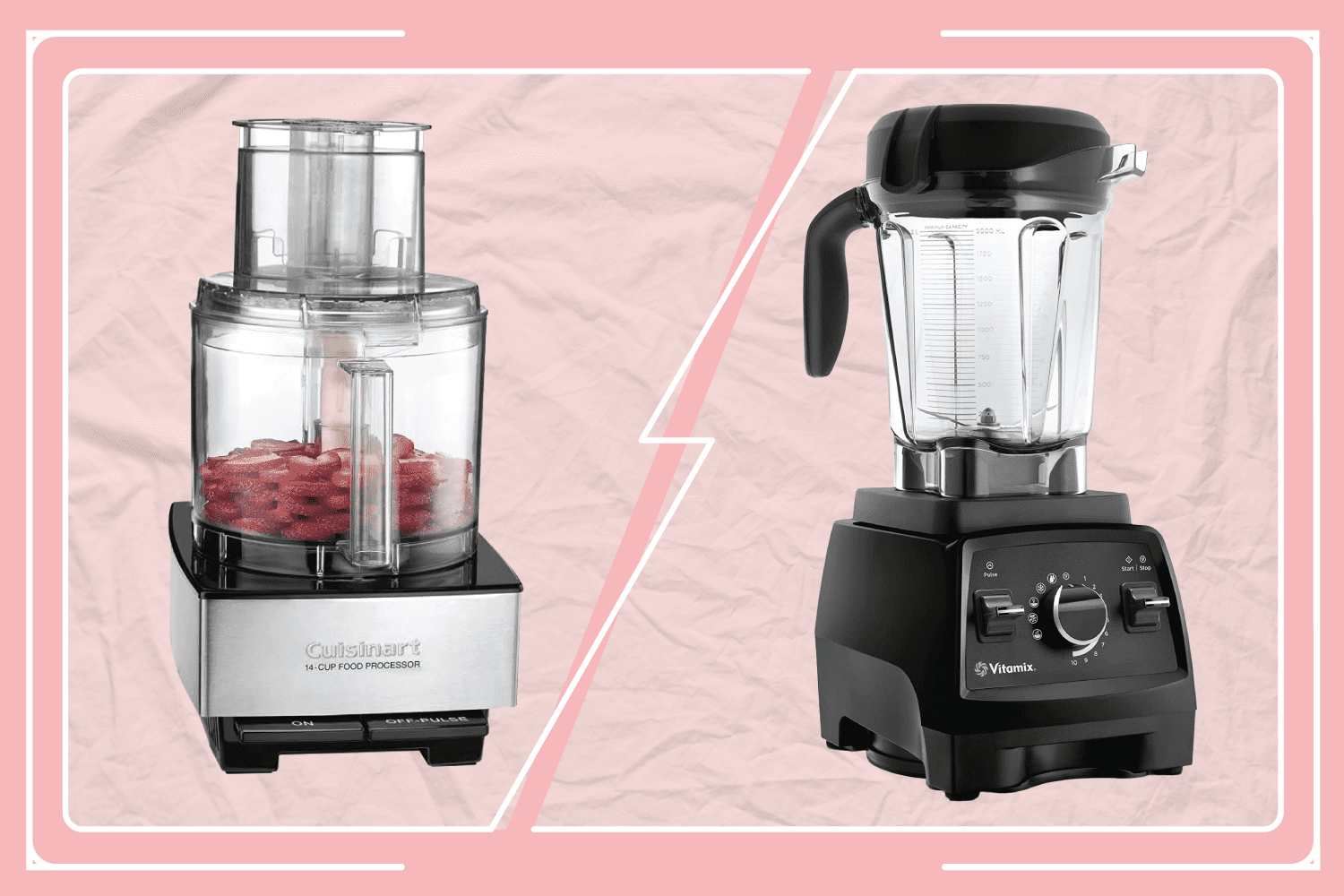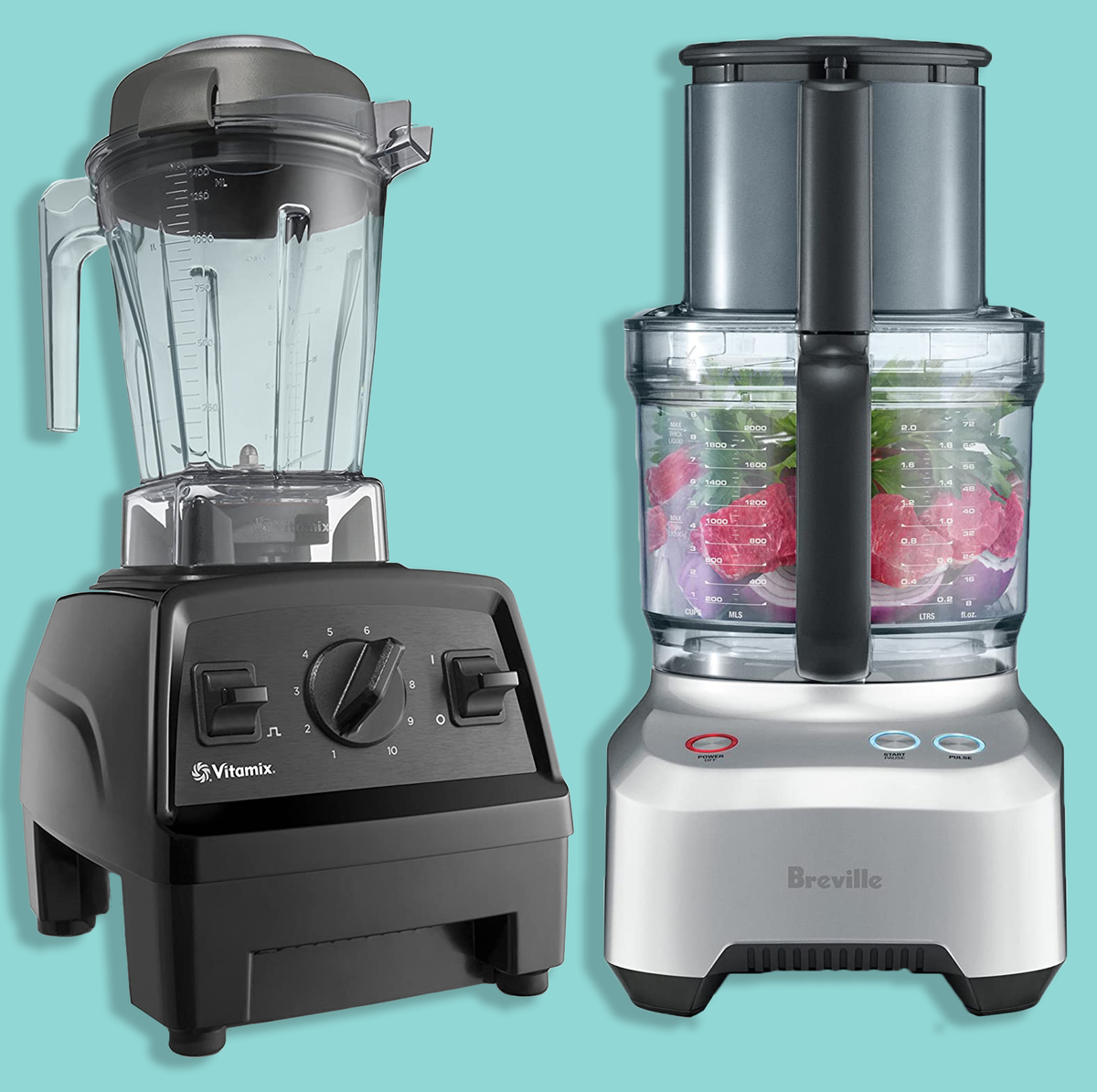I. Introduction to Blenders and Food Processors
A. Understanding the Functionality of Blenders and Food Processors
Blenders and food processors are essential kitchen appliances used for food preparation. Food processors are versatile as they can perform a wide range of food processing tasks, including chopping, slicing, shredding, and pureeing. They are equipped with various attachments and are primarily designed for food prep. Conversely, blenders are mainly used for blending and mixing tasks, making them suitable for preparing smoothies, soups, and sauces.
B. Key Differences Between Blenders and Food Processors
Blenders and food processors differ in design and functionality. Blenders typically consist of a tall, narrow Blenders container fitted with a blade at the bottom, while food processors have wider, shallower bowls with different attachments for specific functions. Additionally, the blade assembly in a food processor is designed to perform a variety of chopping, mixing, and shredding tasks, in contrast to blenders, which are designed primarily for blending and liquefying.

II. Processing Abilities of Blenders
A. Exploring the Capabilities of Blenders for Food Processing
Blenders excel at tasks such as making smoothies, pureeing soups, and blending liquids. They are also effective in crushing ice and creating fruit and vegetable smoothie bowls. In addition, high-powered blenders can pulverize nuts and seeds to create nut butter or grind grains and legumes into flour.
B. Assessing the Limitations of Blenders in Comparison to Food Processors
However, blenders have limitations when it comes to tasks such as slicing, grating, and shredding, which are better suited for food processors. Blenders may struggle with handling a variety of textures, and their limited capacity can make it difficult to process larger quantities of food or achieve different consistencies.

III. Mechanical Structure and Blade Design
A. Comparing the Design of Blender Blades with Food Processor Blades
Blender blades are usually designed to pulverize, liquefy, and mix ingredients thoroughly, with sharp, angled blades that create a vortex to circulate the ingredients within the container. In contrast, food processor blades are specifically shaped and positioned to perform slicing, shredding, and chopping tasks with precision.
B. Understanding the Impact of Blade Structure on Processing Functions
The structural design of blender blades focuses on creating a whirlpool effect to blend ingredients, while food processor blades are engineered to slice, shred, and chop ingredients. This difference in blade design directly affects the type of tasks each appliance can handle efficiently.
IV. Shredding and Slicing Functions
A. Investigating the Shredding Capabilities of Blenders
Blenders can struggle with shredding tasks due to their blade configuration and container shape. While it is possible to shred certain soft ingredients in a blender, achieving consistent, uniform shredding results with various textures and densities is challenging.
B. Comparing Slicing Capabilities Between Blenders and Food Processors
Food processors excel at slicing tasks, efficiently processing ingredients such as vegetables, fruits, and cheese. Equipped with slicing discs and adjustable blades, food processors can produce consistent, thin slices, making them an ideal choice for recipes that require uniformly sliced ingredients.

V. Pureeing and Mixing Capabilities
A. Evaluating the Pureeing Function of Blenders
Blenders are highly effective at pureeing and creating smooth textures. Whether it’s blending fruits and vegetables for smoothies, pureeing cooked ingredients for sauces or soups, or creating creamy nut-based spreads, blenders are proficient in achieving uniform, silky textures.
B. Examining the Mixing Functionality of Blenders Compared to Food Processors
Blenders are adept at creating cohesive mixtures by evenly combining ingredients, making them suitable for blending liquids, emulsifying dressings, or creating smooth batters for pancakes and waffles. Their powerful motors and blade configurations enable efficient mixing and blending.
VI. Dough Preparation and Kneading
A. Assessing the Potential for Dough Preparation in Blenders
While blenders can be used for some dough preparations such as pancake or crepe batters, their narrow containers and blade configurations are not suitable for more substantial dough mixing or kneading tasks.
B. Understanding the Superior Kneading Capabilities of Food Processors
Food processors are the preferred choice for kneading dough due to their spacious bowls and specialized dough blade attachments. They can efficiently mix and knead bread, pizza, or pastry dough, producing consistent and evenly textured results.

VII. Liquid and Solid Food Processing
A. Analyzing the Efficiency of Blenders for Liquid-Based Food Processing
Blenders are well-suited for processing liquid-based recipes, including beverages, smoothies, purees, and sauces. Their ability to effectively blend and emulsify liquids makes them a preferred choice for creating smooth, homogeneous textures.
B. Comparing the Processing of Solid Foods Between Blenders and Food Processors
Food processors have an edge when processing solid foods such as vegetables, fruits, and nuts. They can efficiently perform tasks like chopping, dicing, shredding, and grating, facilitating the creation of various recipes with diverse textures and ingredient formats.
VIII. Textural and Consistency Differences
A. Understanding Texture and Consistency Variances in Processed Foods
Blenders are known for producing smooth, creamy textures due to their ability to thoroughly blend and liquefy ingredients. In contrast, food processors maintain more texture and provide varying consistencies, allowing for chunkier or finely chopped results.
B. Recognizing the Impact of Equipment on Achieving Desired Food Textures
The choice of equipment significantly impacts the texture and consistency of processed foods. Blenders deliver uniform, silky textures, while food processors offer versatile textural variations, catering to different culinary preferences and recipes.

IX. Culinary Applications and Recommendations
A. Identifying Suitable Culinary Uses for Blenders as Food Processor Alternatives
While blenders can effectively handle various food processing tasks, they are particularly well-suited for preparing smoothies, purees, creamy sauces, and liquid-based recipes. Their ability to blend and emulsify liquids makes them a valuable tool in the kitchen.
B. Providing Recommendations for Optimal Equipment Selection in Food Preparation
For comprehensive food processing needs, especially those involving slicing, shredding, and kneading tasks, a food processor is the ideal choice. However, if the primary requirement is blending and mixing tasks, a high-powered blender can serve as a versatile kitchen appliance for various culinary applications.
In conclusion, both blenders and food processors offer unique capabilities and functions, each excelling in specific areas of food preparation. While blenders are ideal for blending, mixing, and creating smooth textures, food processors shine in slicing, shredding, and dough preparation tasks. Understanding the strengths and limitations of each appliance is essential for making informed decisions in the kitchen, ensuring that you select the right tool for the specific culinary tasks at hand. By leveraging the distinct advantages of blenders and food processors, you can elevate your cooking experience and achieve diverse and delicious culinary creations.